About Kagetsu
About
KAGETSU
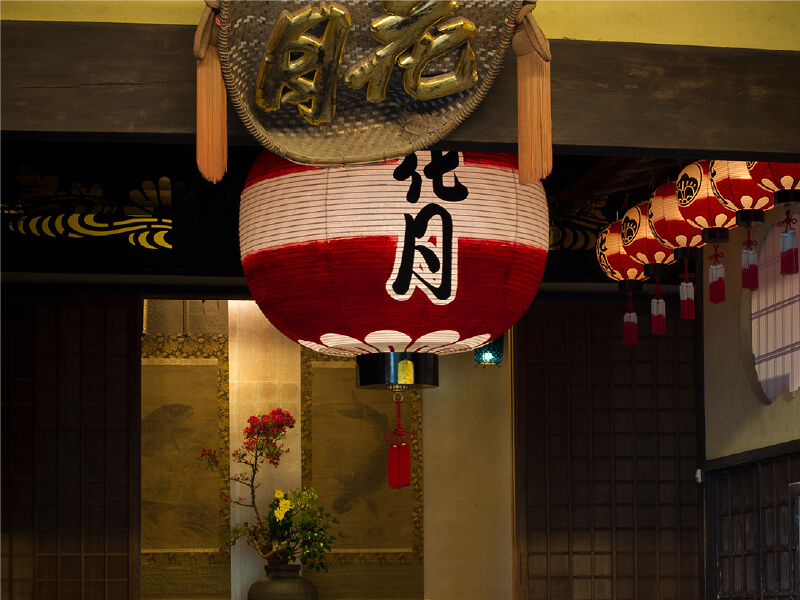
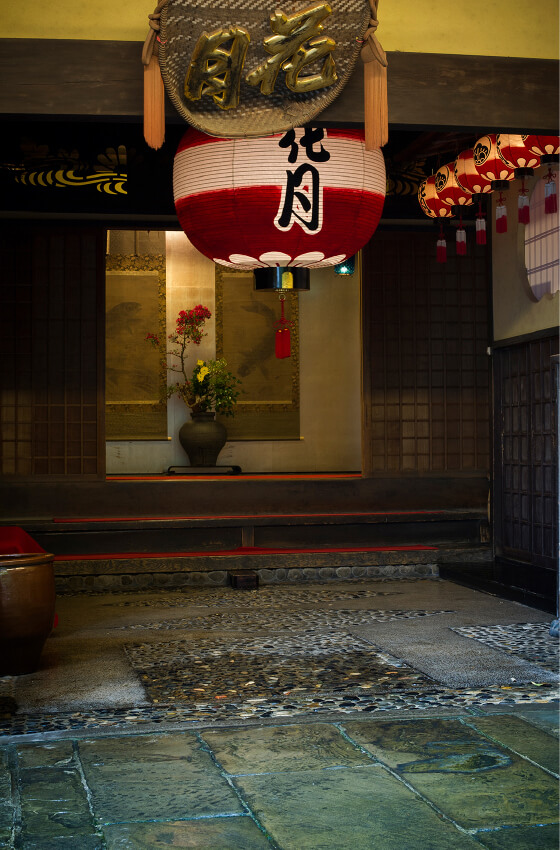
The literary salon where high-status
historical figures frequently visited at the
end of the Edo period
Three hundred eighty two years have passed since the foundation. ‘Hiketa-ya Kagetsu-rou,’ the antecedent of the current Historic Restaurant Kagetsu, was the largest in Maruyama Red-light District. Besides, it employed the highest-ranked courtesans called Tayuu. They had sophisticated skills to entertain customers and were also well educated. They wore elegant clothes and accessories, like Rasha and Sarasa (high-quality clothes), hair ornaments made of tortoiseshell, and accessories made of vidro (glass). Ihara Saikaku, a poet and a novelist of 17th-century Japanese literature, wrote about Maruyama; “if there were no such a place as Maruyama, gold and silver would have been safely taken to home (1688; The Japanese Family Storehouse).” His expression shows how greatly the Maruyama area thrived. Having prestigious features, Hiketa-ya Kagetsu-rou was visited by Jiang Yunge ( 江芸閣 ), a Chinese calligrapher, and Rai San’yō ( 頼山陽 ), a Japanese historian and a poet. That means the latest art had started to flourish in Maruyama. Specifically, Rai San’yō stayed Hiketa-ya Kagetsu-rou for three months, named it ‘Youkasan-kan,’ and even left tenkoku (seal-engraving).
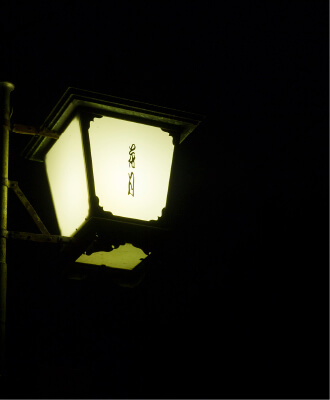
History of
HIKETA-YA
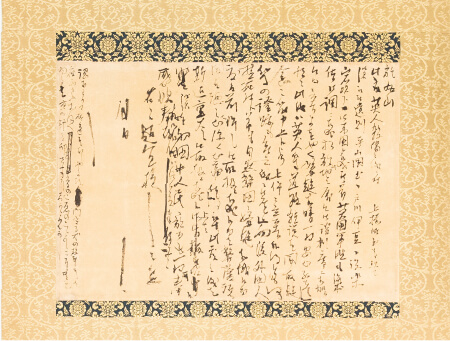
(The picture at the left)
Hand-written by Sakamoto Ryoma. [Ikarusu-gou Ziken Tangansho] The Petition Regarding Icarus Affair. Collected in Historic Restaurant Kagetsu.
This is a draft directly written by Sakamoto Ryoma, which was sent to Bugyosho (Magistrate’s office) when Icarus Affairs happened.
Traces left by patriots at the end of
the Edo period.
At the end of the Edo period, historical figures like Katsu Kaishu, Sakamoto Ryoma, and Iwasaki Yatarou visited Kagetsu and debated the future of Japan. On the second floor, there is the pillar cut which is said to be with the Sakamoto Ryoma’s sword in Ryu-no-ma (Room Ryu). Furthermore, Tsuki-no-ma (Room Moon) is the one used by Katsu Kaishu. According to his diary, another story related to patriots is that Iwasaki Yataro got drunk and fell into the Japanese garden’s pond in Kagetsu. Even though we lost the teahouse in the garden due to the conflagration in 1879 (Meiji 12), the building of Kagetsu could avoid catching fire. That is why the building has been taken over to our generation. After that, Kagetsu had undergone hardships in the first part of the Showa era and damages from the atomic bomb. Finally, Nagasaki Prefecture designated Kagetsu as a historical site in 1960 (Showa 35). We are now running Kagetsu as a ‘Historic Restaurant’ which is unique in Japan.

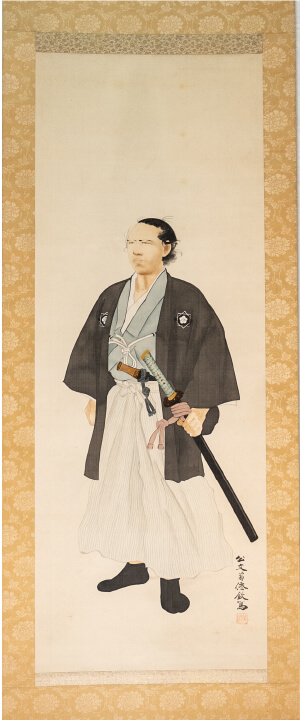
(The picture above)
Hand-written by Sakamoto Ryoma. [Ikarusu-gou Ziken Tangansho] The Petition Regarding Icarus Affair. Collected in Historic Restaurant Kagetsu.
This is a draft directly written by Sakamoto Ryoma, which was sent to Bugyosho (Magistrate’s office) when Icarus Affairs happened.

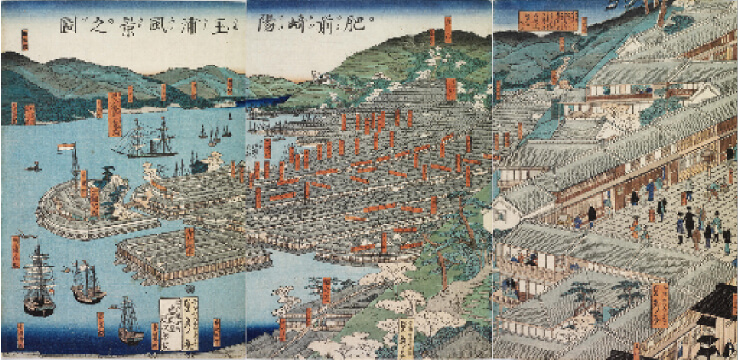
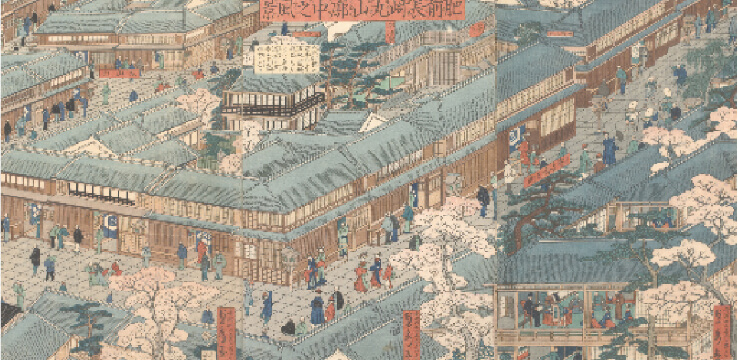
(The picture above) Drawn by Utagawa Hiroshige. [Bizen-Nagasaki-Maruyama-kakuchu-no-fuukei] The View of Inside of Maruyama in Nagasaki.
It pairs with “Hizen-Kiyou-Tamaura-Huukei-no-zu (a name of another painting by him)” and depicts what Maruyama was like. At the top of it, you can see the characters “花月楼(Kagetsu-rou),” letting you figure out that Kagetsu-rou played the central role in Maruyama. It is possible to see this painting in the front entrance.
About
SHUKO-KAN
The storage room “Shuko-kan,”
for learning about the history of
Nagasaki.
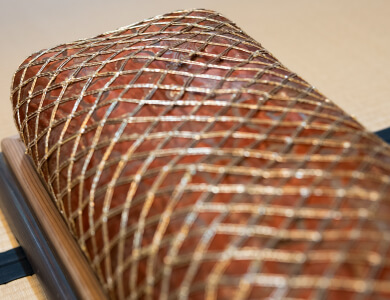 Tsurunomakura
Tsurunomakura
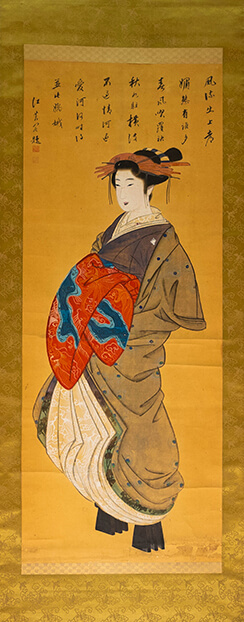 Sodesakidayu
Sodesakidayu
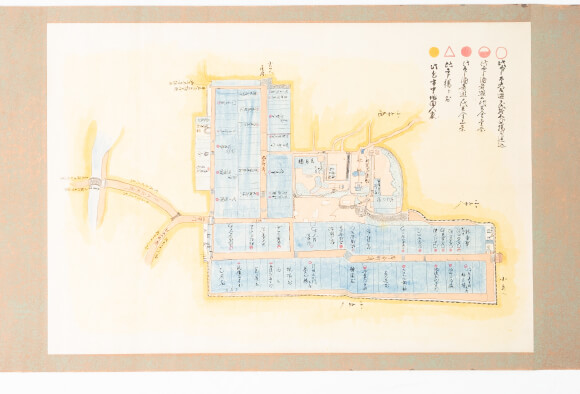 Map of Maruyama
Map of Maruyama
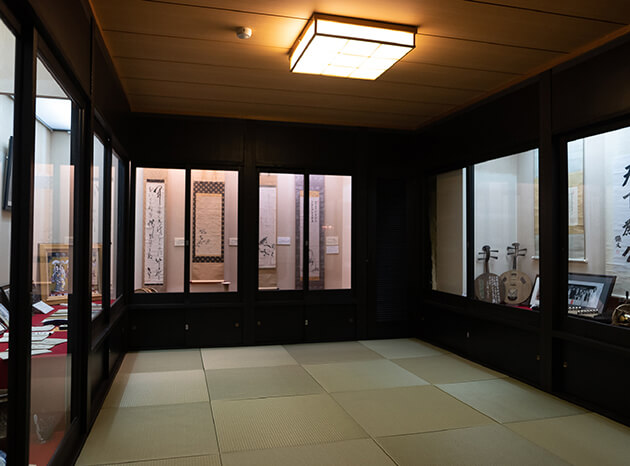
Kagetsu has “Shuko-kan,” where materials related to Hiketa-ya are exhibited. You can view great works such as paintings drawn by Kinoshita Itsu’un, Haiku by Mukai Kyorai, and calligraphy by Rai San’yō. Also, why not check out historical documents like the petition directly written by Sakamoto Ryoma, and photos and songs-books of Aihachi, a famous geisha made into a movie “Nagasaki Burabura Bushi” originally written by Nakanishi Rei.
*Note that only those who ordered something at Kagetsu can visit Shuko-kan.
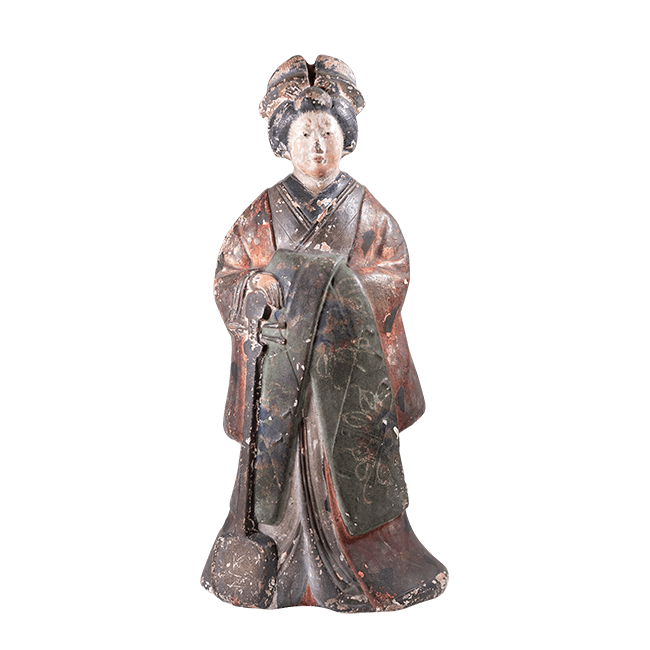 Koga doll
Koga doll
 Tsurunomakura
Tsurunomakura
 Sodesakidayu
Sodesakidayu
 Map of Maruyama
Map of Maruyama
 Putyatin visit to Japan
Putyatin visit to Japan

About
Inari Shrine
The Inari shrine located
in the Kagetsu’s garden.
Fushimi Inari Taisha Shrine, the head shrine of all Inari shrines in Japan, holds the 82nd goddess called “Tsukihime-Okami.” The split of Tsukihime-Okami has been enshrined in the Japanese garden of Kagetsu. You may wish for business prosperity and family safety. Why not visit here when walking around Kagetsu.
*We will regularly pray your prayer in Fushimi Inari Taisha Shrine.

